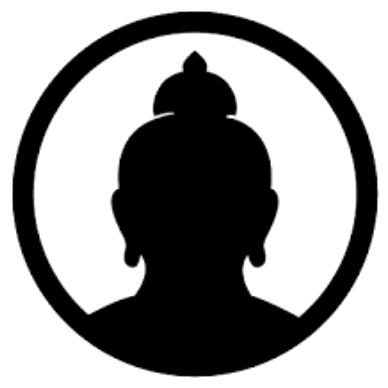There are several studies claiming a 70-percent improvement rate for returning warriors who are treated for combat stress with various cognitive behavioral therapies and/or prolonged exposure strategies. But this is a misleading number.
YOU MIGHT ALSO LIKE
CLEAR ALL
BY TOPIC
BY TEACHER
BY TYPE
FILTER

TOPIC
- Transitions (21)
- Emotional and Mental Health (20)
- Self-Reflection Practices (17)
- Guided Imagery (15)
- Search for Purpose (13)
- Trauma (13)
- Mental Health Challenges (12)
- Faith and Identity (10)
- Fellowship and Community (10)
- Connection with Nature (9)
- Resilience (9)
- Life-Altering Injury (8)
- Psychedelic Research (8)
- Psychedelic-Assisted Therapy (8)
- Adaptability (7)
- BIPOC Well-Being (7)
- Finding Meaning (7)
- Stress Management (7)
- Caregiver Well-Being (6)
- Happiness (6)
- Mind-Body Connection (6)
- Post-Traumatic Growth (6)
- Self-Expression (6)
- Activism/Service (5)
- Belonging (5)
- Hero’s Journey (5)
- Loneliness (5)
- MDMA (5)
- Self-Care (5)
- Black Well-Being (4)
- Collective Trauma (4)
- Connection (4)
- Disabled Well-Being (4)
- Friendship (4)
- Identity Shifts (4)
- LGBTQIA Well-Being (4)
- Meditation (4)
- Racial Discrimination (4)
- Self-Acceptance (4)
- ADD/ADHD (3)
- Animal Connection (3)
- Art Therapy (3)
- Asking for Help (3)
- Authenticity (3)
- Child’s Trauma (3)
- Compassion (3)
- Death or Loss of a Loved One (3)
- Depression (3)
- EMDR (3)
- Exercise (3)
- Gratitude (3)
- Guilt (3)
- Higher Calling (3)
- Honoring Emotion (3)
- Illness and Injury (3)
- Intention (3)
- Ketamine (3)
- Offering Support to Others (3)
- Physical Health (3)
- Retirement (3)
- Self-Development (3)
- Self-Discovery (3)
- Self-Realization (3)
- Speaking Your Truth (3)
- Stress (3)
- Traumatic Grief (3)
- War (3)
- Access to Education (2)
- Aging (2)
- Anxiety (2)
- Athlete Well-Being (2)
- Cancer (2)
- Climate Change (2)
- Death and Dying (2)
- Diet and Nutrition (2)
- Forgiveness (2)
- Generosity (2)
- Growth Mindset (2)
- Habits of Mind (2)
- Healing Approaches (2)
- Healing Touch (2)
- Healthy Eating (2)
- Inner Peace (2)
- Kindness (2)
- Letting Go (2)
- Lovingkindness Meditation (2)
- Mindfulness (2)
- Neuroplasticity (2)
- Neuroscience (2)
- Nonbinary Well-Being (2)
- Parenting (2)
- Personal Development (2)
- Positive Self-Talk (2)
- Positive Thinking (2)
- Racial Healing (2)
- Racial Justice (2)
- Relationship with Time (2)
- Rest (2)
- Self-Healing (2)
- Self-Limiting Beliefs (2)
- Self-Love (2)
- Sexual Assault or Abuse (2)
- Sleep (2)
- Social Justice (2)
- Social Presence (2)
- Social Responsibility (2)
- Somatic Practices (2)
- Spirituality and Health (2)
- Talk Therapy (2)
- Transgender Well-Being (2)
- Unfulfilled Career (2)
- Values (2)
- Women’s Well-Being (2)
- Work-Life Balance (2)
- Young Adult Well-Being (2)
- AAPI Well-Being (1)
- Addiction (1)
- Addiction Recovery (1)
- Anger Management (1)
- Autism (1)
- Awareness (1)
- Awe (1)
- Ayahuasca (1)
- Brain Health (1)
- Breathwork (1)
- Buddhism (1)
- Child’s Autism (1)
- Children’s Well-Being (1)
- Christianity (1)
- Chronic Pain (1)
- Clinical Depression (1)
- Compassion Meditation (1)
- Consciousness (1)
- Courage (1)
- Creative Well-Being (1)
- Cross-Cultural Dynamics (1)
- Curiosity (1)
- Decision Making (1)
- Divorce and Breakup (1)
- Drum Therapy (1)
- Eating Disorders (1)
- Empathy (1)
- Empowerment (1)
- Energy Healing (1)
- Entrepreneurship (1)
- Faith (1)
- Family Acceptance (1)
- Financial Instability (1)
- Focus (1)
- Forest Bathing (1)
- Functional Medicine (1)
- Gender Identity (1)
- Grief (1)
- Handling a Loved One’s Illness (1)
- Identity (1)
- Imagination and Creativity (1)
- Indigenous Well-Being (1)
- Inner Life (1)
- Inner Strengths (1)
- Insomnia (1)
- Integrative Medicine (1)
- Interdependence (1)
- Intergenerational Trauma (1)
- Intuition (1)
- Judaism (1)
- Latinx Well-Being (1)
- Learning Styles (1)
- Life Challenges (1)
- Living with Illness (1)
- Longevity (1)
- Loss of Partner/Spouse (1)
- Lovingkindness (1)
- LSD (1)
- Massage (1)
- Men’s Well-Being (1)
- Mindfulness Meditation (1)
- Moral Philosophy (1)
- Motherhood (1)
- Nightmares (1)
- Obsessions/Compulsions (1)
- Optimism (1)
- Panic Attacks (1)
- Patience (1)
- Perception (1)
- Presence (1)
- Productivity (1)
- Psilocybin (1)
- Psychology (1)
- Racism (1)
- Self-Actualization (1)
- Self-Compassion (1)
- Self-Worth (1)
- Shadow (1)
- Shamanic Healing (1)
- Shamanism (1)
- Social Anxiety (1)
- Social Psychology (1)
- Somatic Experiencing (1)
- Soul Mission (1)
- Spiritual Growth (1)
- Spiritual Healing (1)
- Tapping/EFT (1)
- Transformation (1)
- Trust (1)
- Unconscious Bias (1)
- Wake-Up Calls (1)
- Work Challenges (1)
- Yoga (1)
- Zen Buddhism (1)
FILTER

TEACHER
- Edward Hallowell (2)
- Richard Davidson (2)
- Alice Miller (1)
- Amy Morin (1)
- Byron Katie (1)
- Connie Zweig (1)
- Daniel Goleman (1)
- Edith Eger (1)
- Edward Tick (1)
- Iyanla Vanzant (1)
- Lama Tsultrim Allione (1)
- Light Watkins (1)
- Malidoma Patrice Somé (1)
- Natalie Goldberg (1)
- Oprah Winfrey (1)
- Parker J. Palmer (1)
- Rick Doblin (1)
- Rick Hanson (1)
- Roberto Assagioli (1)
- Sharon Salzberg (1)
- Tara Mohr (1)
- Temple Grandin (1)








